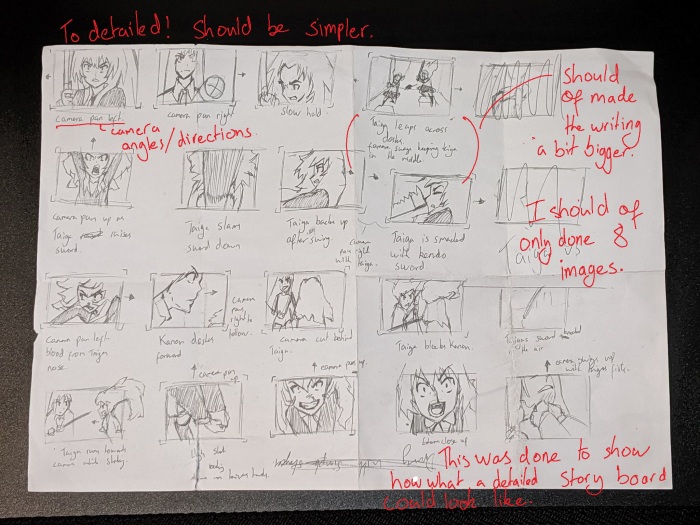*The annotations will be marked on the lesson plan in red and numbered, each annotation will correspond with its number below.
This lesson plan was for my year 7 class at Maronite college, in this lesson my class was conducting a film study of Dreamwork’s animated film How to Train Your Dragon. The overall goal for this lesson was to teach the class how to create a film review which was an activity that was included in their end of term project. In each annotation, you will find how this specific task would be adapted to teach in an online environment effectively. It’s important to me to keep the constructivism approach to this lesson as I find students tend to engage more when they get to physically test the skills they have been learning. For this lesson, I am assuming each student would be signed into Zoom or an equivalent program. All materials used within this lesson would also be placed into their google classroom page so they can have 24/7 access to the materials.
1. Section One was a mandatory part of all lessons taught at Maronite College, to adapt this section for online each student would be asked to type their name into the chat as they sign into the meeting along with sending me an invitation to the google doc which they would be doing their writing in for that lesson, this lets me monitor the students work in real-time.
The prayers would then be read by a student as required by the college.
I would then share screens with the students which would contain either a word doc or a PowerPoint slide which would contain the lessons learning intentions and success criteria. This would be read out loud to the students followed by a minute or two in which they can ask questions about the lesson.
This section-time would also be cut down from 20 minutes to 15, allowing an extra 5 minutes for their writing in section 4.
- A few adaptions would be made for this section:
Firstly, The students would receive a link for a YouTube video of a short animation rather than doing this activity with an entire film. I have chosen to approach the task this way as students may not own a copy of the film.
Secondly, students would be different slides, the student reading the slide could be picked at random. After each slide, a question could be asked revolving around what they have just learnt. For example, “What is the setting for the short animation?”, Students would then write their answers down in their google docs which I can view in real-time to see how they are interacting with the work. Some of these questions may lead to a discussion which would also be encouraged. - Students will be given a link to a film review which will be read out by selected students. This will allow students to see what a professional film review looks like. Again, a discussion is encouraged with this section.
4. This is the section where the constructivism mainly comes into play as students will now engage in creating their review.
For this section, the time limit would be changed to 20 minutes to allow students time to type as I have found through teaching online that student output is slower when typing at this age.
Students would be given 20 minutes to write their review on the provided short animation, this would be completed in their google doc. The reason for students reviewing the animation instead of the movie itself is because some students may not own the movie, whereas if the class is online they would have access to Youtube which the small animation would be hosted on.
Students would be encouraged in this section to ask any questions they may have about the process of reviewing and they will also have access to the slideshow via their google classroom.



